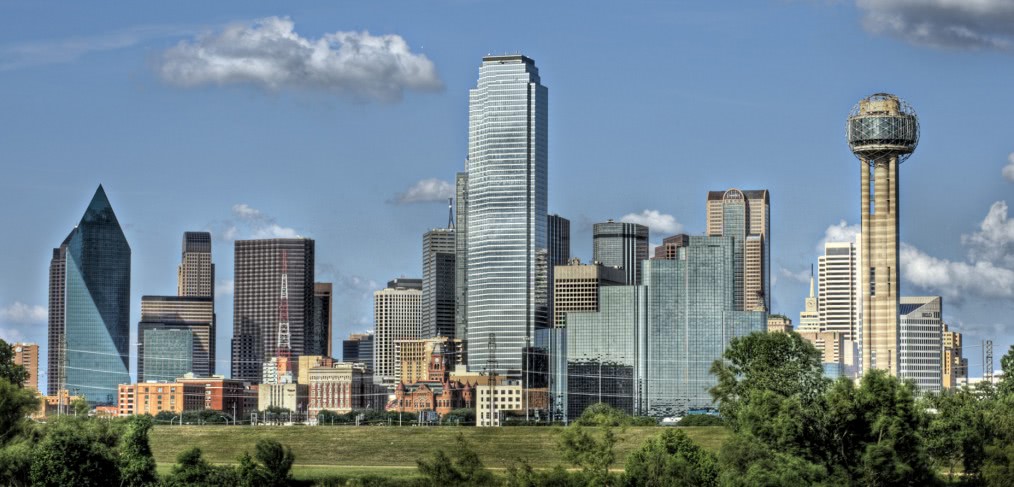
Trip the Light Rail Fantastic: Or How I Learned to Love DART and my City
A first-time commuter’s experiences with public transportation in car-obsessed Dallas.
Not since I was 13 and pushed into the snowmelt-fed Lewis River in southwest Washington by my own grandmother have I been so shocked by a new environment. As for relocating to Dallas in February 2012? It was just as jarring as being submerged in those frigid waters.
Before moving to Dallas, I worked for the Texas A&M medical school in College Station (about 90 miles northwest of Houston for those of you unacquainted with Texas geography). Each day I drove my little Jeep less than three miles to my office, hardly ever advancing past third gear. And each day the scenery blurred by, marked only by the changes in seasons and academic semesters.
For most of my life, I navigated to school and work via short stints in a car, the occasional bike ride and my own two feet. (Once, I rode home from school on a tractor.)
Believe me when I say that I came to Dallas with a hefty amount of trepidation. I am, at heart, Aesop’s “country mouse” gone to visit the big city only to be terrified by some ferocious animal. The prospect of commuting across Dallas’ 340.5 square miles was ferocious enough. Granted, Dallas doesn’t quite match the density of New York City (only 302.6 square miles) or the frenetic thrum of Tokyo, but to me, it was big, noisy, labyrinthine. It might as well have been Neptune.
My first few days in downtown were a bit nerve-wracking, but, as with any new place, each day brought a little more familiarity. After a few weeks, the comfort of familiarity gave way to the exasperation of white-knuckled traffic jams and jockeying with 18-wheelers. I’d had enough. I crunched the numbers, and the answer was clear. Public transportation, here I come!
Now each morning I drive a few miles to a light rail station on Dallas Area Rapid Transit’s (DART) red line. From the elevated platform I can see the top of a slightly hazy skyline and the traffic on North Central Expressway, one of the main arteries into downtown. (When the majority of the road opened in 1956, north Dallas’ population had already expanded beyond expectations, rendering the highway inadequate by the late 1960s. Today, an estimated quarter of a million vehicles a day traverse those lanes.)
From my station, I catch one of two trains headed downtown, and nine stops later, I am deposited at the east entrance of the building in which RTKL is housed.
On paper, I’m saving money (both parking and gasoline being at a premium), reducing emissions, and saving time. It’s a pretty sweet deal.
On a more personal level, I’m observing and experiencing more than I would behind the wheel of a car. I acknowledge the scenery. I watch the sun rise. I engage with my fellow riders and pedestrians. From my new vantage point, Dallas woos me with its sights and sounds—like the St. Jude Chapel, nestled (but brightly hued) on Main Street.
Every morning and evening the train cars are packed with a cast of characters: the young lady with her hair in a bun, graceful neck, an ACE® bandage in the side pocket of her backpack, and light pink footless tights; the middle-aged man poring over the latest edition of Civil Procedure, probably on his way to a law school night class at SMU—all great fodder for my future best-selling novels.
Without participating in public transit, I wouldn’t experience urban art the pedestrian level like this block-long mural on the north side of the Sheraton Hotel. (As a full-time driver, the closest I came to art was a handful of giant, retina-scorching digital billboards.)
Without a car to tether me to the roads, I began to walk about during lunch. I found the food trucks in Thanksgiving Square. Gastronomical joy! I stumbled upon the fresco-painted ceilings of the nearby 1930s-era Post Office (still operational) and Courthouse that have been preserved and adapted into apartments. And there is still much to discover.
For me, being a commuter is all about my point of view, my reference points—both physical and experiential. Four-point-eight miles from home to the train station. Thirty-seven stair steps to the platform. Nine stops to the office. First day of work = commuting is scary and nerve-jangling. Three hundredth day of work = “Yes, this train will take you downtown, and you’ll want to get off at the West End station. If you’ll be there around lunchtime, try Miss Chicken at Elm and Lamar.”
In March, one of my reference points will change. I will move even closer to a DART rail line. So close, in fact, that I’m ditching my Jeep entirely and will walk right to the station. After all, who needs a car when you’ve mastered public transportation?
And as I learned from my grandmother, in any new situation, it’s best to just jump in with both feet.




Public transportation will definitely provide a different view point! Everyone should experience it!
Great post Lindsey. I couldn’t agree more; the sights, the sounds, the scenery of the DART are fantastic!
Nice post, but please consider dropping the “the” before DART in the title. DART refers to the network of buses, trains, shuttles, and paratransit vehicles that provide transit services in the Dallas area. It does not refer a single light rail system called “The DART.” Many people seem to make that mistake, and in the process overlook the wide range of other services provided by DART. The Red Line makes sense. The DART does not.
Thanks!